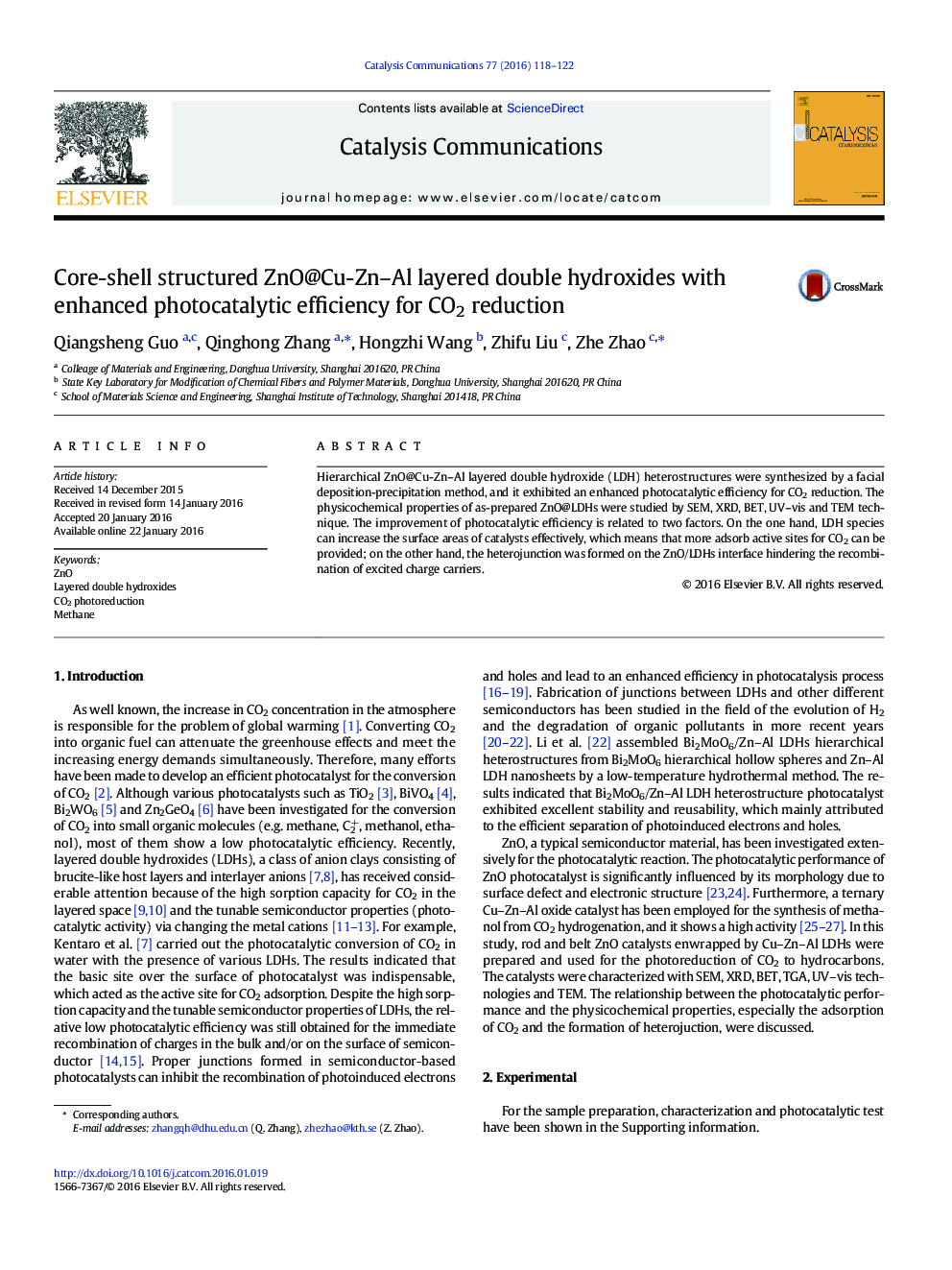| کد مقاله | کد نشریه | سال انتشار | مقاله انگلیسی | نسخه تمام متن |
|---|---|---|---|---|
| 49336 | 46736 | 2016 | 5 صفحه PDF | دانلود رایگان |
• The core-shell structured ZnO@Cu-Zn–Al LDHs was fabricated by a facial deposition-precipitation method.
• The special structures of ZnO@LDHs increase the surface areas and CO2 adsorbed capacity of catalysts effectively.
• The perfect interfacial contact at the ZnO@LDHs interface promotes the separation of electron–hole pairs.
Hierarchical ZnO@Cu-Zn–Al layered double hydroxide (LDH) heterostructures were synthesized by a facial deposition-precipitation method, and it exhibited an enhanced photocatalytic efficiency for CO2 reduction. The physicochemical properties of as-prepared ZnO@LDHs were studied by SEM, XRD, BET, UV–vis and TEM technique. The improvement of photocatalytic efficiency is related to two factors. On the one hand, LDH species can increase the surface areas of catalysts effectively, which means that more adsorb active sites for CO2 can be provided; on the other hand, the heterojunction was formed on the ZnO/LDHs interface hindering the recombination of excited charge carriers.
Hierarchical ZnO@Cu-Zn–Al layered double hydroxide heterostructures exhibited an enhanced photocatalytic efficiency for CO2 reduction.Figure optionsDownload as PowerPoint slide
Journal: Catalysis Communications - Volume 77, 5 March 2016, Pages 118–122
